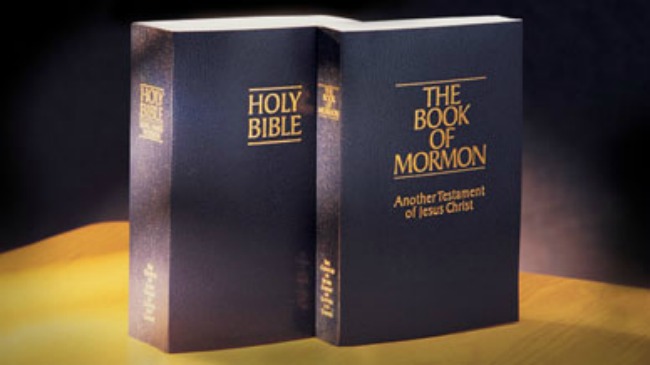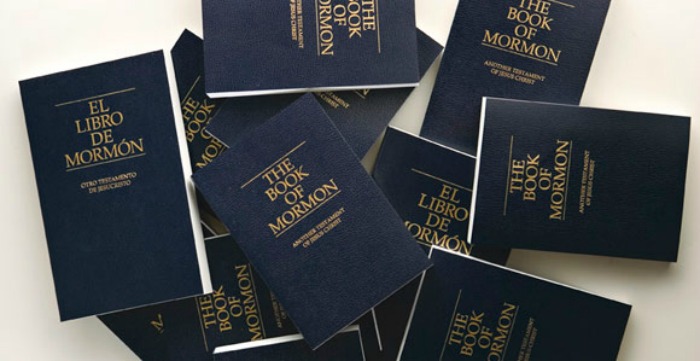Question
Gramps,
I was reading in the New Testament in Matthew chapters 6-7. In 3 Nephi it references from Matthew almost word for word, verse for verse out of the King James Version. There were a few words changed here and there but the verses were literally identical. Did Joseph Smith copy Matthew Chapter 6-7 into 3rd Nephi or was this supposed to be a translation from the golden plates? The Nephites didn’t have the New Testament part of the Bible so it was just confusing to me why it looks copied almost word for word. The Bible has been through so many translations it was difficult for me to understand that the similarities could have been so identical between the Bible and the Book of Mormon. Could you please help me understand this better?
Bryce
Answer
Dear Bryce,
First, let’s talk a little bit about the process of translation and transliteration. In transliteration, one replaces each word in one language for the corresponding word in the other language. Since the structures and grammar of each language are different from all others, transliteration seldom carries the thoughts and intents of the original language. The process of translation is for the translator to perceive the meaning, the intent, the nuances of wording and emphasis in the original language and then attempt to convey the same ideas and feelings in the proper words in the other language. Let me give you one or two examples. Let’s take a passage from the Bible that is also recorded in the Book of Mormon–Isaiah 5:11-14
11 Woe unto them that rise up early in the morning, that they may follow strong drink; that continue until night, till wine inflame them!
12 And the harp, and the viol, the tabret, and pipe, and wine, are in their feasts: but they regard not the work of the LORD, neither consider the operation of his hands.
13 Therefore my people are gone into captivity, because they have no knowledge: and their honourable men are famished, and their multitude dried up with thirst.
14 Therefore hell hath enlarged herself, and opened her mouth without measure: and their glory, and their multitude, and their pomp, and he that rejoiceth, shall descend into it .
The Book of Mormon version in 2 Nephi 15:11-14 is identical except for one word in verse 11, where till in the Bible is replaced by and in the Book of Mormon. As a point of comparison we may look at the same Isaiah passage as found in the Dead Sea Scrolls, translated from Hebrew into English by two contemporary scholars, Theodor Gasler and Geza Vermes. Gasler’s translation is as follows—
11 Woe to them that arise early, to go chasing after strong drink, that stay late in the cool of the evening, while wine lights fires within them!
12 Those carousals of theirs are but rounds of strumming and drumming, of hooting and tooting–and wine. Quite oblivious they are to what the Lord is about, too blinded ever to see what He is actually doing.
13 That is the reason why my people, likewise unconscious, have likewise been ‘carried away’–away to an alien land, their gentry starving for hunger, their masses parched for thirst
14 That too is the reason why it is Hell that now stretches its gorge, and Hell that now holds its mouth limitlessly agape, while down goes all their proud show, all their racket and riot, and all that made merry therein.
Vermes’ translation is as follows—
Woe to those who rise early in the morning to run after strong drink, to those who linger in the evening until wine inflames them. They have their zither and harp and timbrel and flute and wine at their feasts, but they do not regard the work of the Lord or see the deeds of His hand
Therefore my people go into exile for want of knowledge, and their noblemen die of hunger and their multitude is parched with thirst.
Therefore Hell has widened its gullet and opened its mouth beyond measure, and the nobility of Jerusalem and their multitude go down, her tumult and he who rejoices in her.
Comparing these four texts, one wonders why the Book of Mormon and Bible versions are nearly identical whereas the other two versions differ markedly from the Bible and from each other as well. The explanation is simple. In the first place Joseph Smith did not copy the King James Version of the Bible in his translation. He translated the Book of Mormon “by the gift and power of God,” using the Urim and Thummim. Here is Emma Smith’s description of how Joseph translated the Book of Mormon—
“Emma described how she would write for him “day after day, often sitting at the table close by him.” He would translate by excluding the light from his interpreting stone by a hat. Some have assumed that this process went on without the plates, since Emma said that he sat at this table “dictating hour after hour with nothing between us.” But the plates evidently had a constant function in their work, since they were also at the same table” (Richard Lloyd Anderson, Investigating the Book of Mormon Witnesses, p.29).
So it is obvious that Joseph did not copy from the Bible. The language from which he was translating was the Egyptian language, written in hieroglyphics. The first part of the Book of Mormon, down to the Book of Mosiah, was translated directly from the writings of Nephi and Jacob, with brief entries by others down to sometime between 279 and 130 BC. The rest of the book was written by Mormon and Moroni, who lived in the forth century AD after their written language had been significantly modified.
We saw above the difficulty of translating from one phonetic language to another, but how about translating from a pictographic language to a phonetic language? The choice of words in translating from a pictogram to a phonetic language is strictly the choice of the translator. But who is the translator of the Book of Mormon? Joseph Smith merely wrote down what he was told to write. He was not the translator; God was. Joseph was just the scribe! So the end of the whole matter is that God chose to use the language of the King James Bible in translating the hieroglyphs into English–except where the biblical content was in error. If you study the changes between the Book of Mormon and Bible versions of Isaiah, and the few verses from the Old and New Testaments recorded in 4 Nephi, you will find that all the changes made are significant and meaningful.
Gramps







